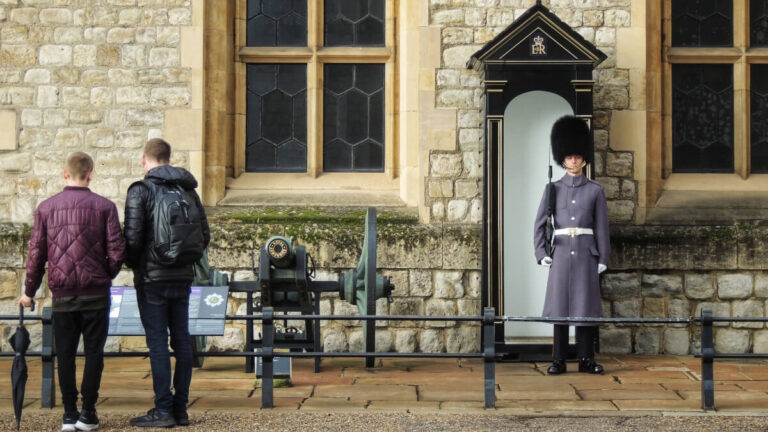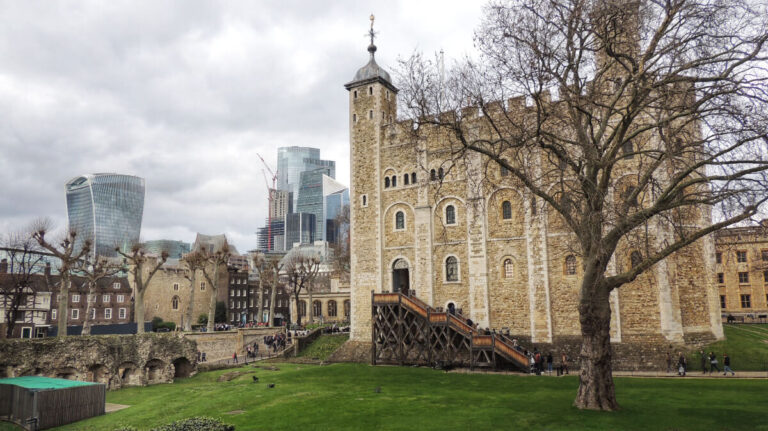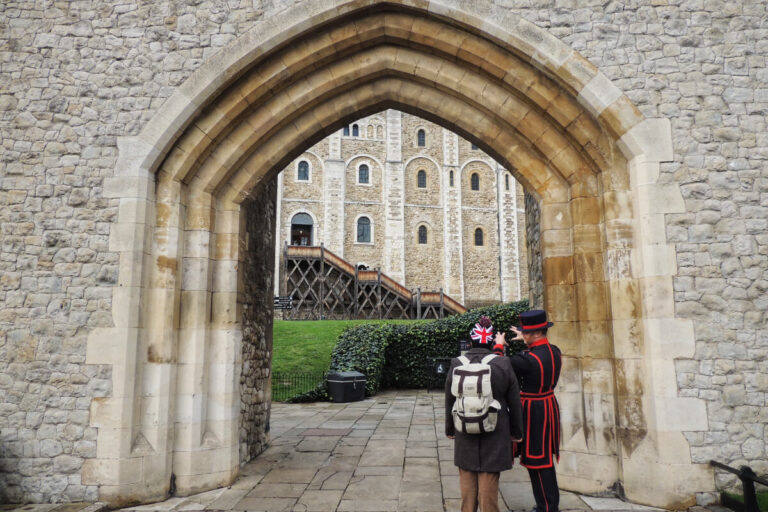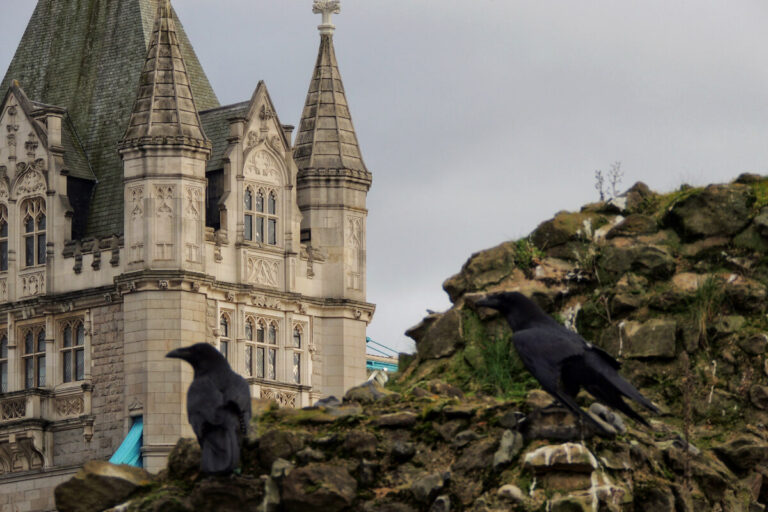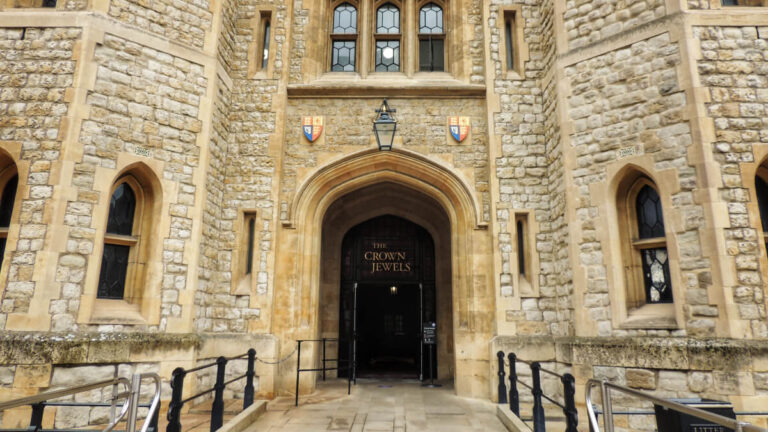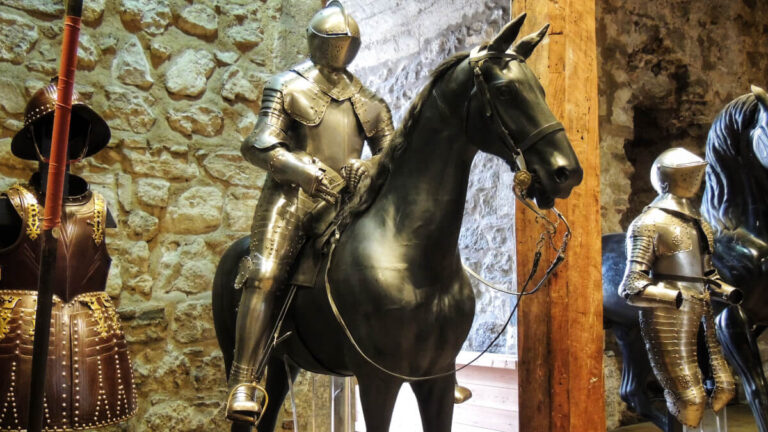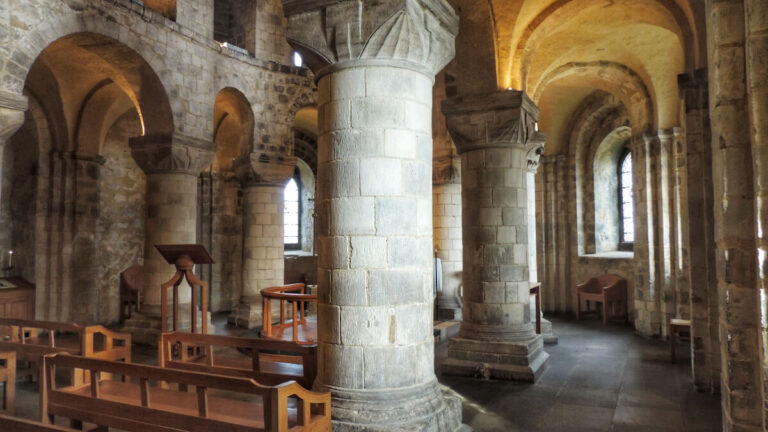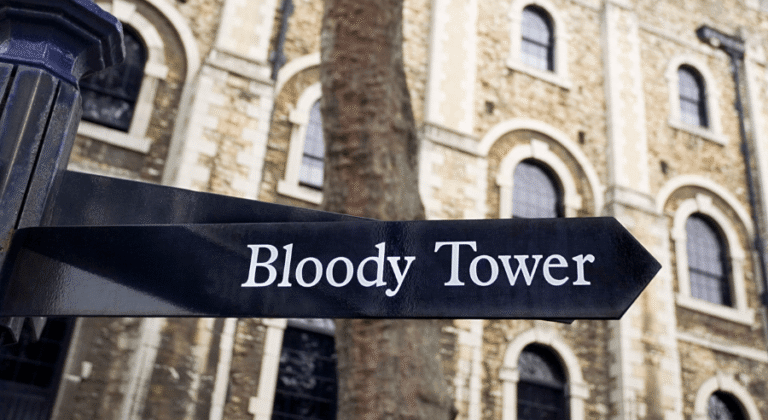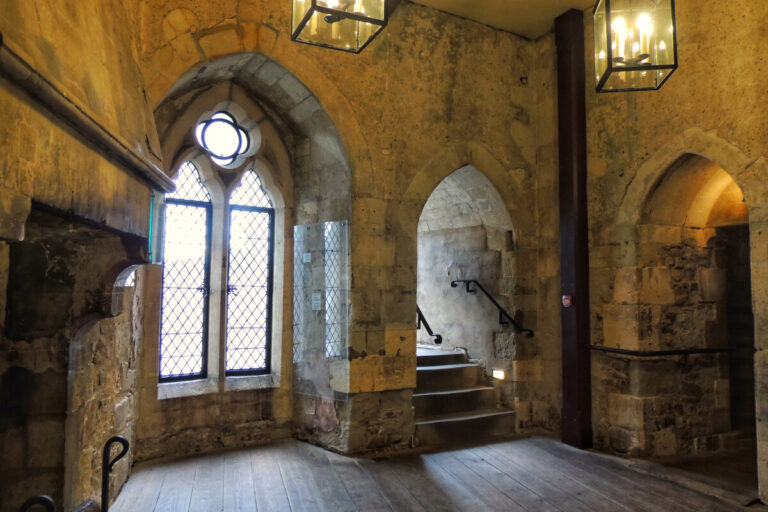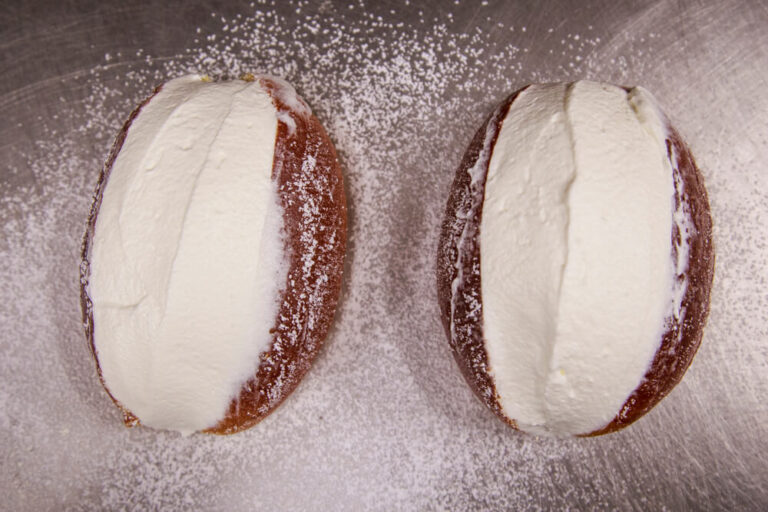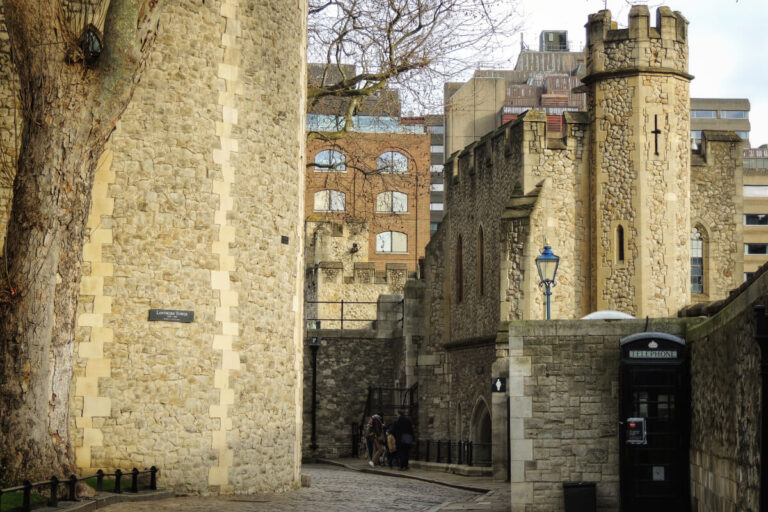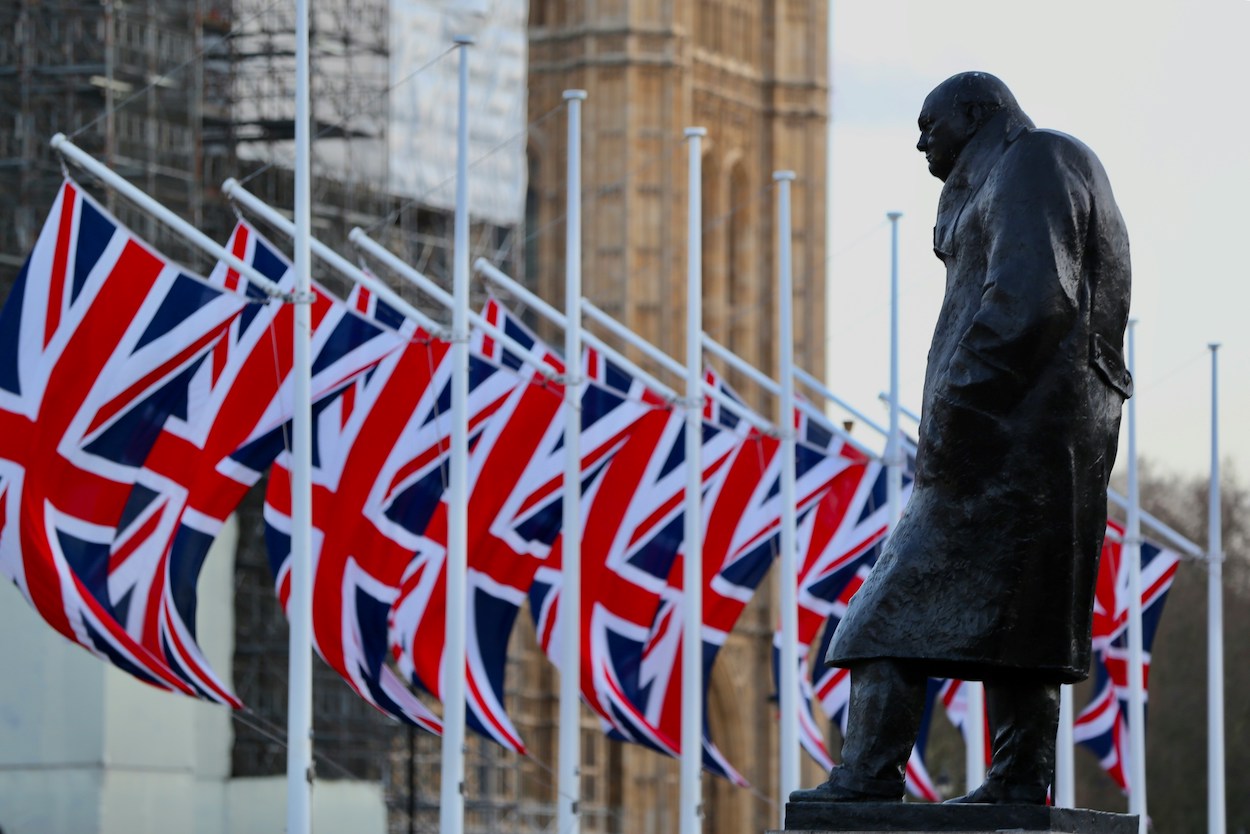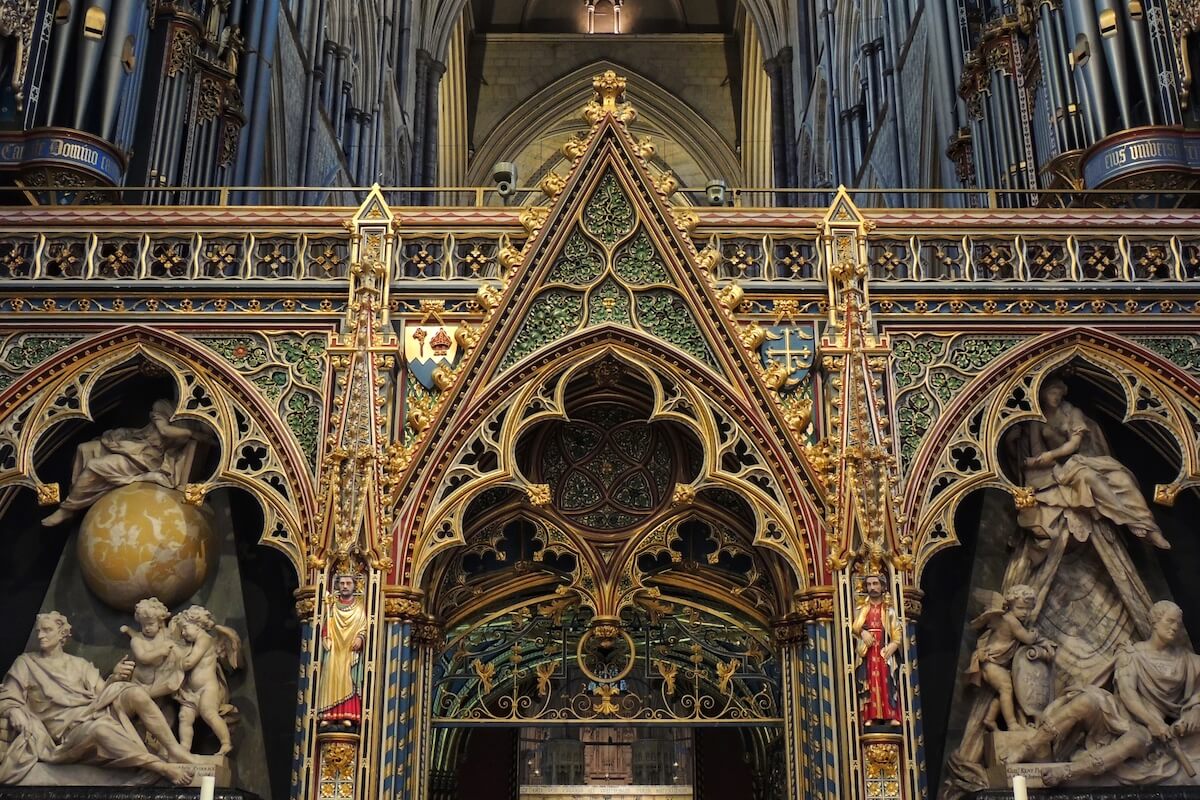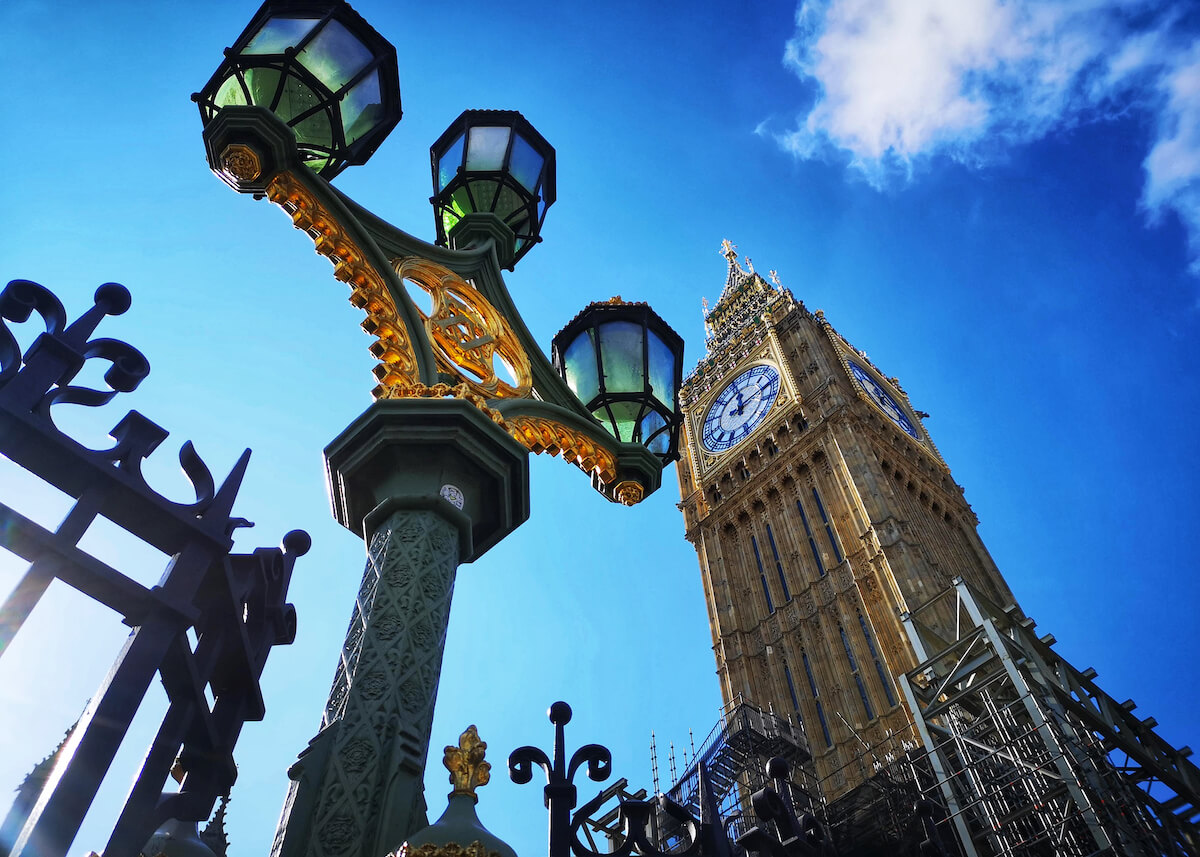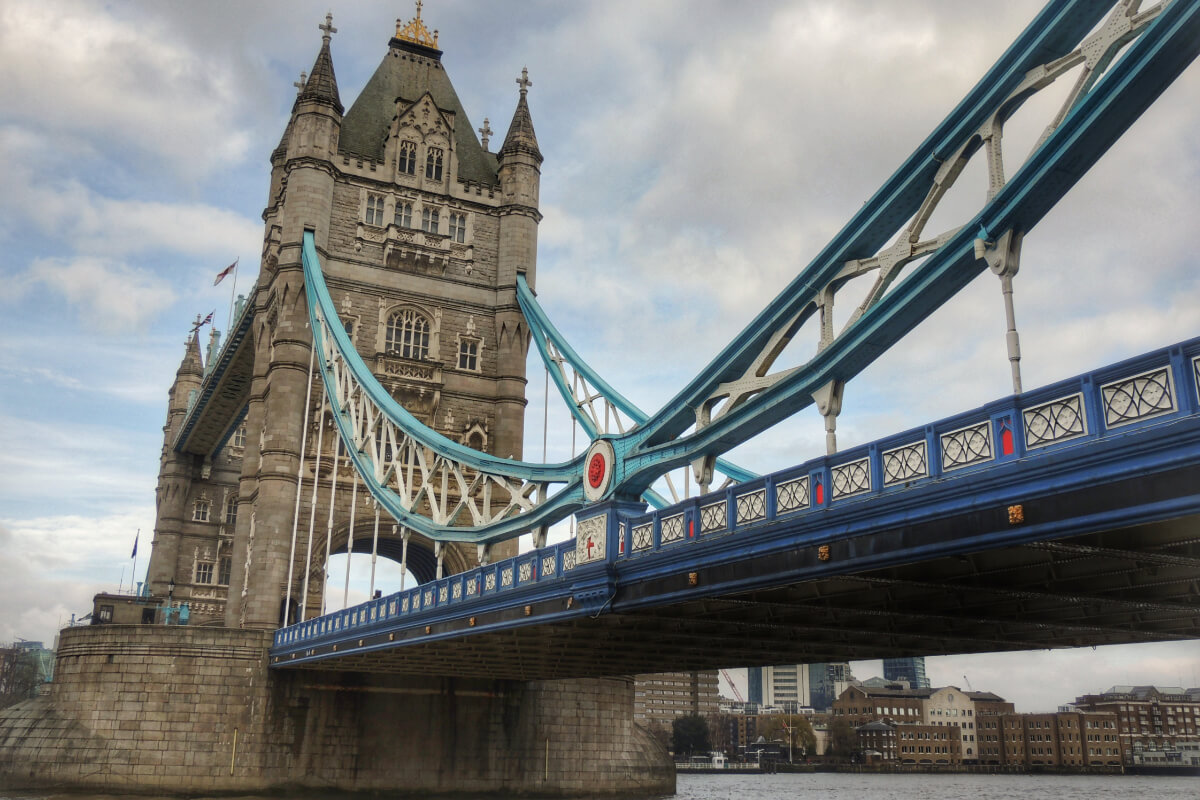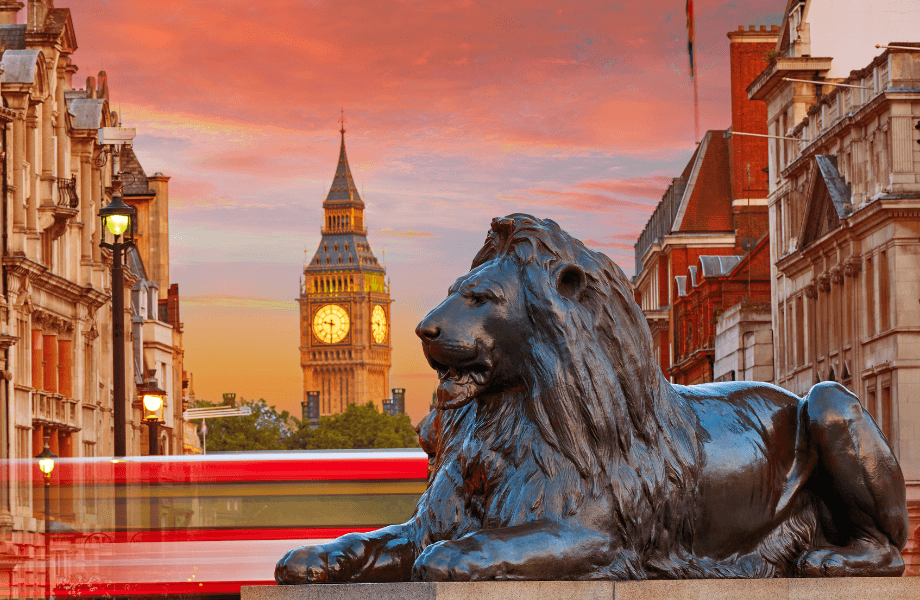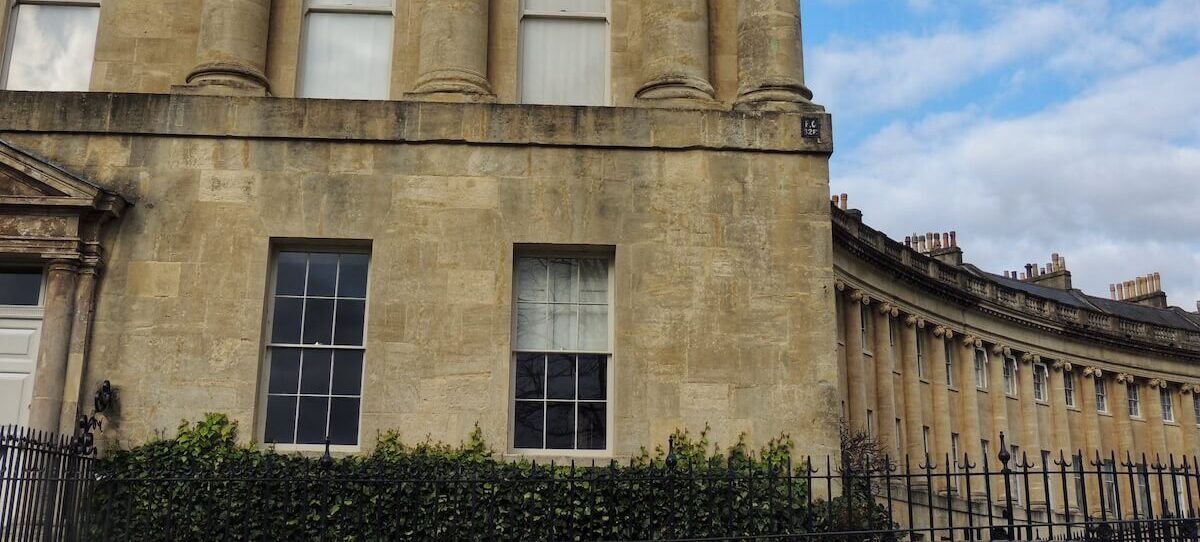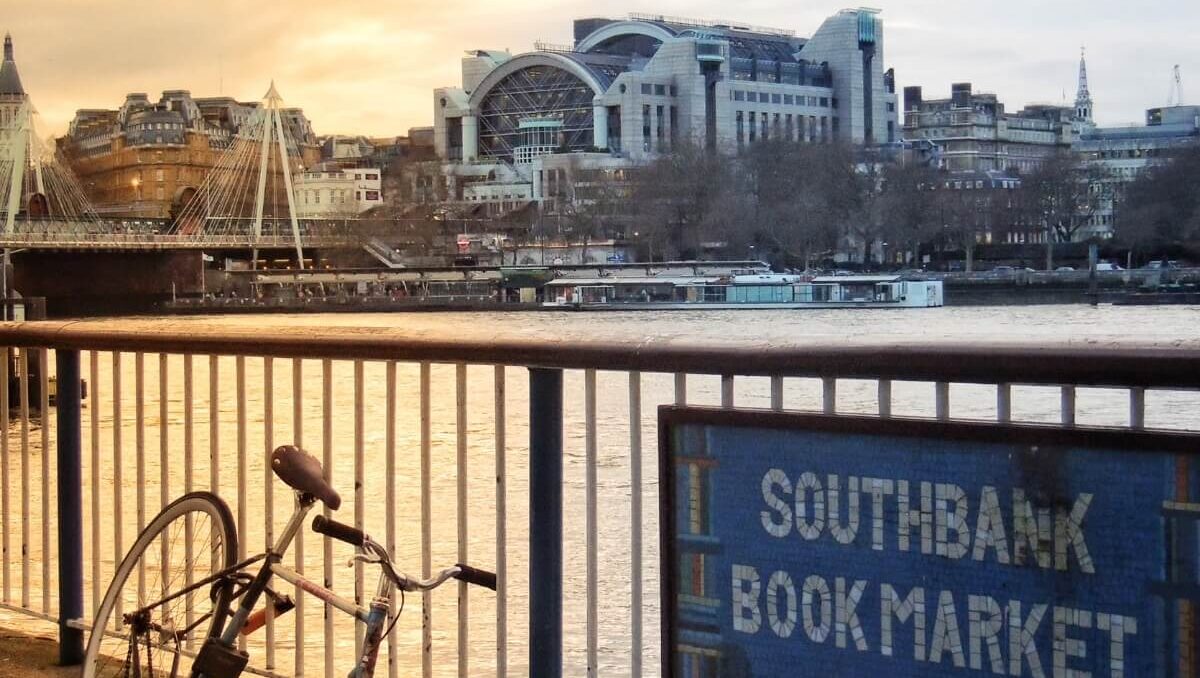Guarding the eastern route to the city of London from its hilltop position overlooking the river Thames, the Tower of London has been a forbidding symbol of royal power and infamous dungeon for nearly 1,000 years. From its origins as William the Conqueror’s first foothold in the city in the aftermath of his successful invasion in 1066, The Tower has played a massive role in the story of London ever since.
A visit to the Tower of London is a must for anyone who wants to understand the history of the English capital: learn about the all-powerful monarchs who ruled here and the bloody court intrigues and betrayals that are etched into the tower’s very architecture; Henry VIII’s unfortunate wives Anne Boleyn and Catherine Howard were beheaded here, whilst the scheming Richard III had his nephew Edward V and his brother Richard secretly murdered in the so-called Bloody Tower, a notorious crime that has echoed down the annals of English history. And that’s just the beginning. Join us as we count down 10 things you need to see at the iconic landmark!
Check out our London tours
At the heart of the Tower of London complex stands the White Tower. Dating from the 1070s, the imposing fortified structure is the oldest building in London, built by William the Conqueror as a threatening and extremely visible sign of his new power in the wake of his successful invasion. Henry III had the tower painted white in the 1240s, giving it its current name, and for centuries the edifice doubled as a luxurious royal palace and forbidding prison for enemies of the state – Anne Boleyn, Thomas More, Lady Jane Grey, Guy Fawkes and Roger Casement were just a few famous names to have spent their final days locked in the tower.

Officially known as the Yeoman Warders, the guards colloquially known as the Beefeaters are in charge of security at the Tower of London. It’s one of the ultimate honours in the British Military to be appointed one of the 37 warders, who swear allegiance to the monarch up to death when taking up their posts. To be eligible, soldiers must have served at least 22 years in the army and risen to the rank of warrant officer. How the Yeoman Warders came to be known as Beefeaters is something of a mystery, although it seems likely that the moniker arose as a result of the traditional practice of the soldiers being part-paid in slabs of beef in centuries past.
You’ll instantly recognise the Beefeaters thanks to their distinctive red and blue uniforms emblazoned with the royal insignia, and although they have a fearsome reputation, these days they are more likely to be answering visitors’ questions rather than escorting traitors to the scaffold. The Yeoman warders also lead regular tours of the Tower of London, included for free in the entrance ticket.

The Beefeaters aren’t alone in being responsible for the safety of the Tower and its residents. Accompanying the Warders in their task is a group of at least six black ravens, whose presence is, according to legend, vital for the well-being of the monarchy itself. If the ravens were to abandon their posts, so the story goes, the monarchy will fall. Ravens have been recorded at the Tower since at least as far back as the 16th century, when gruesome contemporary accounts record the birds pecking at the eyes and exposed corpse of the executed Lady Jane Grey in 1554.
How long a captive flock of ravens have been kept at the Tower is a matter of some dispute, however. According to some, Charles II instituted the practice in the mid 17th century, whilst other scholars maintain that it’s a much more recent phenomenon, the product of the romantic and gothic sensibilities of 19th-century Victorian London. Whatever the truth, the ravens are by now a fixture at the Tower, where they are fed and looked after by the Yeoman Warders.

The most famous and precious collection of royal regalia in the world, you’ll have seen some of the choicest pieces of the English Crown Jewels in action during the Coronation of King Charles III at Westminster Abbey in May 2023. A mind-boggling 23,000 precious stones feature in the collection; many of the pieces were created in the 1660s, when the monarchy’s role as head of state was re-established by Charles II in the wake of the English Civil War.
When not in use during official functions, the priceless array of crowns and sceptres, gems and jewels are kept in the secure environment of the Waterloo Barracks at the Tower of London under the watchful eye of the Yeoman Warders. Although you can visit the Barracks and gaze on the resplendent jewels, no photography is allowed.

The fabulous armour of English kings line up in this airy hall in the White Tower, where the ceremonial tournament outfits of Henry VIII, Charles I and James II amongst other monarchs stand as impressive symbols of the pomp and ceremony of the Royal court. The Line of Kings was dreamed up as a museum curiosity and visitor attraction way back in the 17th century, when King Charles II wished to promote the image of the monarchy after its recent restoration. Although the historical veracity of many of the pieces is open to question, the Line of Kings is a must-see on a visit to the Tower of London.

This spectacular 11th-century chapel is one of the finest examples of Norman-era architecture in England. Although the chapel was begun during the reign of William the Conqueror himself, who intended it as his private royal chapel, it was not completed until after his death – Henry III commissioned stained glass windows and painted decoration for the chapel in the year 1240.
With its thick columns, soaring galleries, delicately carved capitals and spacious apse, St. John’s Chapel is seriously impressive – a house of worship fit for a mighty king. The beautiful chapel is rich in history – it was here that the noble knights of Bath were invested for centuries, here from where the archbishop of Canterbury was dragged to his death during the Peasants’ Revolt of 1381, and here that the most important royal records were deposited for safekeeping deep within the walls of the White Tower.

Imprionsment, torture and execution are synonymous with the Tower of London in the public imagination, and not without reason. Traitors, suspected enemies of the state and potential rivals were routinely sequestered away at the Tower for centuries, and dark tales of injustice and familial murder abound in the historical record. The most notorious of these, and the event that led to the Bloody Tower earning its foreboding name, was the imprisonment of the young King Edward V and his brother in the tower by their unscrupulous and power-hungry uncle the Duke of Gloucester, soon to be crowned as Richard III. The boys were murdered in secret in a crime that was immortalised by Shakespeare in his play Richard III, their bodies buried at the base of the tower.
Numerous other high profile figures were imprisoned in the Bloody Tower over the centuries, including the adventurer and Queen Elizabeth’s one-time favourite Walter Raleigh, who spent 13 years incarcerated here before his execution.

Although less notorious than the nearby Bloody Tower, the Beauchamp Tower also served as a jail for prisoners awaiting execution. Providing a fascinating but chilling insight into the psychological torture that the inmates were subjected to during their time here, the walls of the tower are covered with graffiti and inscriptions carved into the plaster by desperate prisoners. Amongst the texts are many written by Catholics imprisoned for their faith during the bloody persecutions carried out during the reign of Queen Elizbeth at the end of the 16th century.

Henry II and Edward I are two of the English monarchs most associated with the history of the Tower of London; in addition to commissioning new fortifications and expansions of the complex during their reigns in the 13th century, the kings also had a luxurious series of domestic apartments built here across three tower buildings – St. Thomas’ Tower, the Wakefield Tower and the Lanthorn Tower.
Today the towers, known collectively as the Medieval Palace, have been restored to evoke their original medieval splendour. Original objects and wall hangings as well as authentic recreations of furniture – including Henry’s magnificent gilded throne and Edward’s splendid four-poster bed – give a vivid sense of the courtly world of England in the Middle Ages.

The highly fortified Tower of London is ringed by a series of walls, and an inner curtain wall separates the inner and outer wards of the complex. A raised walkway known as the Battlements links the 13 towers that guard the perimeter, dating from the 13th-century reign of King Henry III. Today the towers are home to temporary exhibits detailing different aspects of the Tower’s history, including life at the tower during World War II, the bloody events of the People’s Revolt in 1381 and the menagerie of exotic animals that were kept here in the early-modern period.
Through Eternity Tours offer fascinating in-depth tours of the Tower of London, including a visit to nearby Tower Bridge and Borough Market. Visiting the Tower in the company of an expert local guide is the best way to get to grips with this iconic London landmark – click here to find out more!

Book Your London Experience

